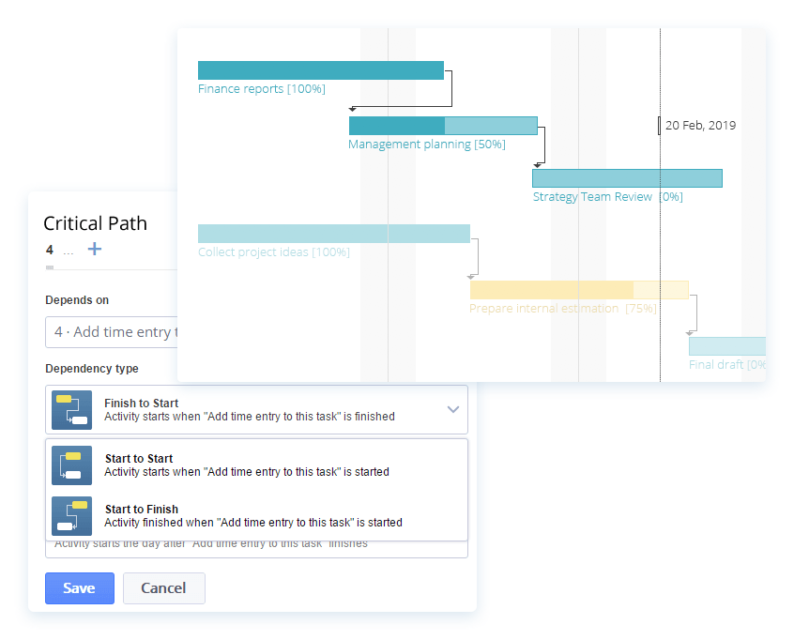You′re bound to encounter the Gantt chart some time over the course of your project management career. In fact, you may have encountered one already; perhaps misspelled as Gant.
Simply defined, a Gantt chart is a bar chart representation of a project′s timeline subdivided into tasks (although in actual practice the Gantt chart is anything but simple). It was developed by Henry Gantt in the early 1900s, was used in World War I, and now is a common feature in many modern project management tools and applications.
Common features
Although the Gantt chart has many variations, they all share a couple of common features:
- Fixed duration. All Gantt charts have a defined beginning and end, in accordance with the project schedule. Timeline lengths vary, but completion dates are always defined (if not always followed)
- Work broken down into tasks. Each of these subtasks will have its own timeline in relation to the overall project schedule. Some PM tools allow users to set task dependencies.
Advantages of Gantt Charts
- Easily understood. Gantt charts are much simpler to understand than flowcharts and give a better idea of a project timeline than looking at an actual calendar. In addition, many online Gantt chart tools can also assign responsibilities to each subtask, so it′s easy to see who is doing what.
- Progress tracking. Many versions of the Gantt chart use color shadings and percentage numbers to track progress in individual tasks and the project as a whole. This gives project managers the ability to read the situation at a glance and see which tasks might need additional resources.
Gantt Chart Limitations
- Scalability. The Gantt chart′s design is best suited for small to medium-sized projects with a reasonable number of tasks. Larger and longer projects may result in unwieldy and convoluted timelines.
- Information density. Because the Gantt chart is schedule-based, it may not effectively communicate the size or complexity of individual tasks. This may cause issues with resource planning or risk assessment.
Despite the above limitations, the Gantt chart is still one of the most reliable methods of planning, scheduling, and tracking a project and its progress, hence its inclusion in most project management software tools.
Follow us


